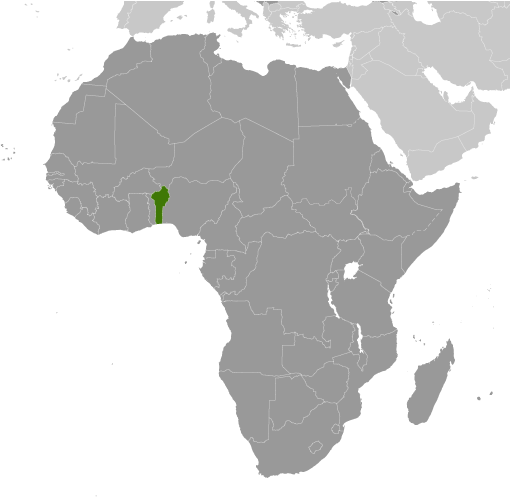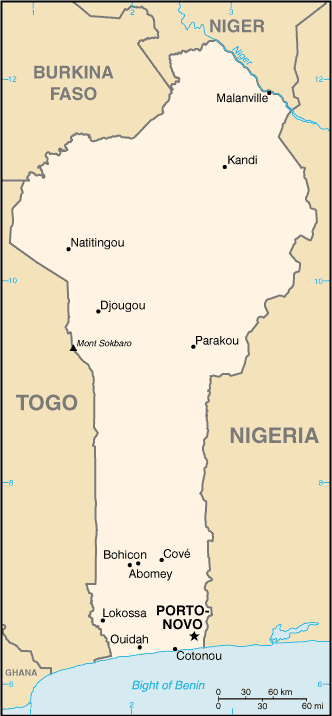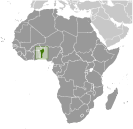
|
|
Advertisements:
People And SocietyNationality
Noun Beninese (singular and plural)
Adjective Beninese Ethnic groups
Fon and related 39.2%, Adja and related 15.2%, Yoruba and related 12.3%, Bariba and related 9.2%, Peulh and related 7%, Ottamari and related 6.1%, Yoa-Lokpa and related 4%, Dendi and related 2.5%, other 1.6% (includes Europeans), unspecified 2.9% (2002 census) Languages
French (official), Fon and Yoruba (most common vernaculars in south), tribal languages (at least six major ones in north) Religions
Catholic 27.1%, Muslim 24.4%, Vodoun 17.3%, Protestant 10.4% (Celestial 5%, Methodist 3.2%, other Protestant 2.2%), other Christian 5.3%, other 15.5% (2002 census) Population World Ranking: 90
9,598,787 (July 2012 est.)
Note Estimates for this country explicitly take into account the effects of excess mortality due to AIDS; this can result in lower life expectancy, higher infant mortality, higher death rates, lower population growth rates, and changes in the distribution of population by age and sex than would otherwise be expected Age structure
0-14 years
44.7% (male 2,126,973/female 2,042,340) 15-64 years 52.6% (male 2,443,370/female 2,461,421) 65 years and over 2.7% (male 101,640/female 149,288) (2011 est.) Median age
Total 17.6 years
Male 17.2 years Female 18 years (2012 est.) Population growth rate World Ranking: 14
2.877% (2012 est.)
Birth rate World Ranking: 17
37.55 births/1,000 population (2012 est.) Death rate World Ranking: 76
8.79 deaths/1,000 population (July 2012 est.) Net migration rate World Ranking: 77
0 migrant(s)/1,000 population (2012 est.) Urbanization
Urban population 42% of total population (2010)
Rate of urbanization 4% annual rate of change (2010-15 est.) Major cities - population
COTONOU (seat of government) 815,000; PORTO-NOVO (capital) 276,000 (2009) Sex ratio
At birth 1.05 male(s)/female
Under 15 years 1.04 male(s)/female 15-64 years 1 male(s)/female 65 years and over 0.67 male(s)/female Total population 1 male(s)/female (2011 est.) Maternal mortality rate World Ranking: 30
350 deaths/100,000 live births (2010) Infant mortality rate World Ranking: 29
Total 60.03 deaths/1,000 live births
Male 63.3 deaths/1,000 live births Female 56.59 deaths/1,000 live births (2012 est.) Life expectancy at birth World Ranking: 188
Total population 60.26 years
Male 59 years Female 61.59 years (2012 est.) Total fertility rate World Ranking: 16
5.22 children born/woman (2012 est.) Health expenditures World Ranking: 157
4.2% of GDP (2009)
Physicians density
0.059 physicians/1,000 population (2008) Hospital bed density
0.5 beds/1,000 population (2005) Hiv/aids - adult prevalence rate World Ranking: 41
1.2% (2009 est.)
Hiv/aids - people living with hiv/aids World Ranking: 55
60,000 (2009 est.)
Hiv/aids - deaths World Ranking: 48
2,700 (2009 est.)
Major infectious diseases
Degree of risk Very high
Food or waterborne diseases Bacterial and protozoal diarrhea, hepatitis A, and typhoid fever Vectorborne diseases Malaria and yellow feverRespiratory disease Meningococcal meningitis Animal contact disease Rabies (2009) Children under the age of 5 years underweight World Ranking: 37
20.2% (2006)
Education expenditures World Ranking: 116
3.5% of GDP (2007)
Literacy
Definition
Age 15 and over can read and write Total population 42.4%Male 55.2% Female 30.3% (2010 census) School life expectancy (primary to tertiary education)
Total 9 years
Male 11 years Female 8 years (2005) Unemployment, youth ages 15-24 World Ranking: 130
Total 0.8%
Male 1.1% Female 0.6% (2002)
Comments
Add a new comment: |
Advertisement
Members area
Benin (Porto-novo):
 
GPS points from Benin (Porto-novo)
|
||||||||

 Present day Benin was the site of Dahomey, a prominent West African kingdom that rose in the 15th century. The territory became a French Colony in 1872 and achieved independence on 1 August 1960, as the Republic of Benin. A succession of military governments ended in 1972 with the rise to power of Mathieu KEREKOU and the establishment of a government based on Marxist-Leninist principles. A move to representative government began in 1989. Two years later, free elections ushered in former Prime Minister Nicephore SOGLO as president, marking the first successful transfer of power in Africa from a dictatorship to a democracy. KEREKOU was returned to power by elections held in 1996 and 2001, though some irregularities were alleged. KEREKOU stepped down at the end of his second term in 2006 and was succeeded by Thomas YAYI Boni, a political outsider and independent. YAYI, who won a second five-year term in March 2011, has attempted to stem corruption and has strongly promoted accelerating Benin's economic growth.
Present day Benin was the site of Dahomey, a prominent West African kingdom that rose in the 15th century. The territory became a French Colony in 1872 and achieved independence on 1 August 1960, as the Republic of Benin. A succession of military governments ended in 1972 with the rise to power of Mathieu KEREKOU and the establishment of a government based on Marxist-Leninist principles. A move to representative government began in 1989. Two years later, free elections ushered in former Prime Minister Nicephore SOGLO as president, marking the first successful transfer of power in Africa from a dictatorship to a democracy. KEREKOU was returned to power by elections held in 1996 and 2001, though some irregularities were alleged. KEREKOU stepped down at the end of his second term in 2006 and was succeeded by Thomas YAYI Boni, a political outsider and independent. YAYI, who won a second five-year term in March 2011, has attempted to stem corruption and has strongly promoted accelerating Benin's economic growth.